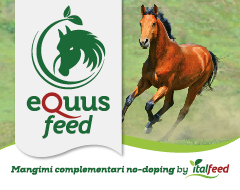
With the November Foal Sale set to get underway tomorrow morning, Nick Luck chats with Edie Murray-Hayden of Gormanstown Stud about the art of pinhooking and how she turned €56,000 into €500,000 at Goffs.
If the conclusion of the Godolphin-Coolmore Cold War grabbed most headlines at a noteworthy Orby Sale in late September, it was heartening to see the single most astute piece of bloodstock trading get some due appreciation.
Fifteen years from the moment she first waved a catalogue in the direction of the Goffs rostrum, Edie Murray-Hayden fetched €500,000 for a colt by Dabirsim she had bought as a foal for €56,000 from the same ring ten months earlier.
With the small matter of 1116 catalogued foals through the coming week, I wondered how I might go about securing a tenfold return on my investment and figured there was only one place to start.
I catch Murray-Hayden midmorning at her Gormanstown Stud, 17 miles to the South West of the sales complex that has yielded her so much success, and with it the deep respect of her peers. She is working with one of her Event horses, prompting me to wonder whether her more rounded knowledge of a range of equestrian disciplines has given her an edge when sourcing bloodstock.
“Definitely,” she says breezily, but without a trace of self-regard. “There is a huge crossover between the work I put into my event horses and the youngsters I am preparing for the sales ring. I think there is much more the industries can learn from each other.”
Given that Murray-Hayden has competed internationally since her teens and still produces horses to CCI** level, this open-minded approach was always likely to pay off.
“Essentially, all horses have to be balanced and symmetrical to reach their athletic potential,” she continues. “I like to work hard ironing out any asymmetry, making their brains work and keeping them fresh. I have a select number and I just love to understand them and work with nice horses, so I’m in the fortunate position that it’s never going to become a conveyor belt.”
All well and good, but these are horses that need to strike the market in a manifestly different way as yearlings from how they were perceived as foals. So how does that horseman’s eye identify what has the potential to accrue value through a steeper curve of physical development?
“Well, for a start, I don’t mind a later foal born in April or May. There’s bound to be that little bit more potential for improvement, and sometimes they’re just at that stage where they might not look their best. But, if you can see beyond that to the basic shape of the foal, that will define how its musculature will develop. Essentially, I buy where I think I can add value.”
There are, however, two key physical attributes which have to pass muster: “They must have good, strong hindquarters, and the horse has to be able to use its shoulder well.”
Clearly, when there are so many potential recruits to the Gormanstown academy within the covers of one bumper catalogue, a fair bit of sifting needs to take place before a sale has started and, as Murray-Hayden explains, a slightly unorthodox approach to pedigrees can be an advantage:
“If you are only taking one or two to the sale, you want to stand out a little bit. The top commercial stallions like Dark Angel and Kodiac are obviously fantastic, but I don’t really want to have a middle of the road one! So I don’t mind a foal by a slightly unusual stallion, so long as his career is in front of him and the dam is young and interesting.”
So step forward Dabirsim, the explosive dual-Group 1 winning two year old with the Japanese/ Italian pedigree who launched Christophe Ferland’s training career in 2011 and who was represented by just one lot in the Goffs 2016 foal sale:
“I hadn’t remembered the sire,” confesses Murray-Hayden, “but I did some research and liked what I saw. I loved the fact the dam had actually been placed behind him in a good race in France, and the colt foal was such a good looking, nice individual and I thought ‘something a bit different’! I knew when he came back as a yearling, he could make quite a lot of money, but I couldn’t honestly have predicted it would be that much!”
It is striking that despite producing the well-known and classy pair Approve and Sir Prancealot, she prefers to major on less obvious tales from the ring, such as the Acclamation colt bought (for €62,000) “on the cusp of the recession in 2008,” who was “probably too much of a gentleman to be racehorse.” He sold for 180,000 guineas. Or the €20,000 son of Desert Style with the most precocious of pedigrees that fetched €62,000, only to be put away as a bumper horse by Mark Pitman. Or the jumper “in the wrong sale” turned around to a profit three months later that turned out to be Cheltenham Festival hero Black Hercules.
Murray-Hayden says that “a lot of it is down to luck,” but you fancy that her innate horsemanship and love of the work that she can invest in a horse’s development will always combine to make her a fair bit luckier than most.
fonte : Goffs




